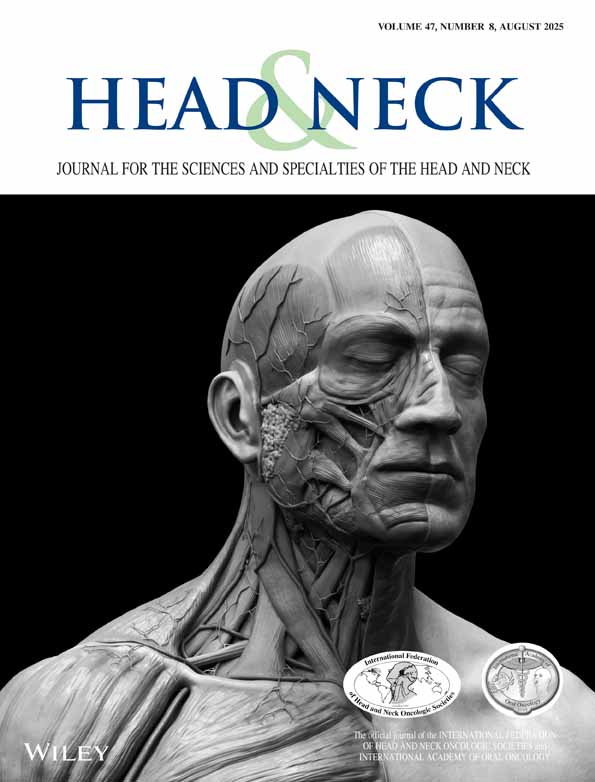Reconstruction of the hard palate using the radial forearm free flap: Indications and outcomes
Abstract
Background.
Although prosthetic obturation is the “gold standard” for restoration of hard-palate defects, obturators can be problematic. We present 10 cases of palatal reconstruction with the radial forearm free flap and compare patient satisfaction with defect-matched patients rehabilitated with prosthetic obturation.
Methods.
Twelve patients who underwent radial forearm free flap (RFFF) reconstruction of a hard-palate defect and eight patients, with similar-sized defects who were rehabilitated with a prosthetic obturator, were evaluated for donor site and recipient site complications, diet, and patient satisfaction.
Results.
All the patients in both groups were able to resume an unrestricted diet with normal mastication and articulation. Both groups achieved equivalent satisfaction scores with regard to appearance, chewing, and taste; however, the patients reconstructed with an RFFF reported higher satisfaction scores in speech, comfort, convenience, and social interaction.
Conclusions.
RFFF reconstruction of hard-palate defects provides a functional alternative to conventional prosthetic obturators. © 2004 Wiley Periodicals, Inc. Head Neck 26: 808–814, 2004




